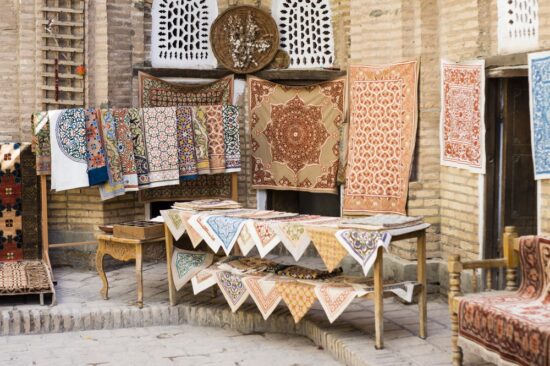
Are you in the midst of designing your dream home’s interior layout? While you’re busy coordinating with utility providers and managing construction crews, it’s important not to overlook one key decision: your flooring choice.
There’s a wide range of flooring options in the market, each offering a different underfoot experience and other practicalities for your new home. Some homeowners prefer a soft and plush underfoot, while others prefer a sleek and uniform flooring.
In any case, your flooring dictates the comfort and livability of your room, making it an essential element to consider in supporting the overall feel and atmosphere of your new home. If you’re wondering which floor best suits your preference, then you’re in the right place.
We’ll dive deep into the differences between the two most popular types of flooring for the household: carpet and tiles. Let’s take a look at them and see which one may best fit your lifestyle.
Let’s get started!
How Flooring Affects Your Lifestyle
Flooring is an often overlooked element in the house due to its understated presence compared to furniture, lighting, and other decorative accents. And it’s easy to tell why at a glance; it’s not the first thing you pay attention to when entering a room.
However, this doesn’t mean that your home’s flooring should be a low priority; your flooring choice can influence how you live just as much as every other part of the room. In fact, your floor choice may play an even more influential role than these aforementioned decorative aspects.
There are many reasons why picking the right flooring material can affect your quality of life at home. Here are some reasons why flooring can impact your lifestyle.
- Comfort: Floor type can alter the texture of the underfoot, making it slip-resistant or slippery; softer or firmer. These variables can influence the ease with which you walk around the floor, whether you’re walking, running, or sliding across it.
- Maintenance: Your choice of flooring will also influence how often—and how thoroughly—you’ll need to clean and maintain it.
- Noise: Floor choice can also drastically influence the reverb and noise levels of the room and the other parts directly connected to the room.
- Temperature: Some floor types have better insulation properties in cold weather, retaining heat, whereas other floor types absorb are less resistant to drastic temperature changes.
- Safety: Some floor types have better safety properties than other floor types, like better slip resistance and shock absorption. Safer flooring is generally preferred in households with vulnerable individuals like young children, seniors, and pets.
In essence, flooring is something that you’ll have to deal with in everyday life. It’s generally a good idea to pick one that makes living in your household feel comfortable, pleasant, and suitable for your lifestyle.
You can find a catalogue of excellent tiles and carpet flooring in online retailers like Choices Flooring. But this begs the question: which among carpets and tiles is the better flooring choice? Let’s take a look at the pros and cons of each type.
Carpet: Definition and Utility
Carpets have been around for thousands of years, but modern-day versions have surged in popularity since the 1950s and have continued to remain in the public periphery up to the modern era.
This flooring type is a textile-based fabric that’s laid on top of bare flooring. It’s typically found in spaces with relatively frequent foot traffic, like living rooms, bedrooms, and hallways.
Carpets can come in various materials, colourways, and patterns, making them an extremely versatile choice that can fit a whole range of settings. On top of its aesthetic flexibility, carpets also enjoy a range of functional perks that set them apart from other flooring types.
Pros of Carpets
- Many Material Types
Carpets can be made from natural materials like wool to more synthetic materials like polyester and nylon.
Each type of material has a different touch-feel and look that can magically change a room’s vibe. These materials also come in different price points, a testament to this flooring’s accessibility to the broader market.
- Eco-Friendly and Sustainable
Modern carpets are made with sustainability standards in mind. This means that they’re less likely to contribute to landfill waste due to their construction having a low amount of volatile organic compounds.
There are also a wide range of carpets that are made from wholly recyclable and renewable materials, making it a great way to reduce individual environmental impact.
- Improved Household Insulation
Plush carpets with dense fibres have potent heat-trapping properties, allowing the house to stay warm and cosy in cold weather without overworking the heating system. This can lead to a lower energy bill over time.
- Improved Safety
Carpets not only provide a soft footfeel, but also provide a gripper surface for people and pets to walk on. This reduces the chance of slips and falls, fostering a safer environment for kids and seniors.
- Better Household Comfort
Plush carpets have a soft underfoot texture, which makes walking on them feel painless and comfortable. Moreover, carpets also help nurture a quiet environment thanks to their sound-absorbing fibres, making it a great way to keep the noise levels low throughout the house.
Cons of Carpet
- Difficult to Clean
Instead of simply scrubbing the floor and using a mop to wipe it dry, you would have to undergo more involved maintenance with a carpet. Cleanups tend to take a long time, and something like a spill or stain can require you to bring your carpet to the dry cleaner’s for treatment.
That said, many modern carpets are spill-resistant, so picking that option can save you the trouble in most cases.
- Can Capture Allergens
If you have pets or live in a dusty environment, then a carpet can capture the hairs and dust from the environment and trap them inside the fibres. People who have allergies or asthma may be more prone to developing respiratory symptoms when exposed to uncleaned carpets for an extended period.
- Moisture-Trapping Properties
Fibrous carpets are no-gos in places that get wet easily, like bathrooms and kitchens. This is because absorbed liquids and spills can harbour bacteria, mould, and odours, which can lead to foul smells and potential health hazards.
Tiles: Definition and Utility
Tiles are hard, durable flooring materials that are known for their uniform and sleek appearance. Just like carpets, they can come in a variety of different designs. They’re mostly used in areas that may be exposed to water, like kitchens and bathrooms.
Tiles are an ideal choice in households in several ocassions. Let’s explore where this flooring type excels and where it falls short.
Pros of Tiles
- Durable and Long-Lasting
Once fixed onto the floor base, tiles can last for years without needing to be removed or maintained besides the regular cleaning.
This is the case even if the room is regularly exposed to humid and wet conditions—and even so, many tiles can be coated with anti-slip finishes to further reinforce its durability.
- Low-Maintenance Cleaning
Tiles are easy to clean, especially when compared against carpets.
Most spills on tiles can be wiped up with a wet cloth or mop, and regular sweeping or mopping is usually enough to keep tiles looking pristine and shiny.
- Allergen-Free Surface
Unlike the case for carpets, tile doesn’t trap dust, pollen, or pet hair.
This makes tiles a great option for people with allergies or people who want to have purified and clean air at home.
Cons of Tiles
- Will Need Professional Installation
Installation work can be expensive and labour-intensive. This is unlike the case for carpet flooring, where homeowners simply just have to unroll the carpet and leave it atop its intended surface.
- Cold and Hard
Tiles can get cold easily if exposed to cold conditions, like a window left open overnight. It’s also naturally hard, which may not be the most comfortable surface for individuals with sensitive feet.
These properties can make tiles uncomfortable to step on first thing in the morning or when planning to unwind at night.
- Higher Accident Risk
Tiles have a less grippy texture. If you installed tiles without an anti-slip finish, people in the household may be prone to slipping, especially if the tiles are wet. Injuries and accidents are more likely to occur on tile surfaces than on carpets.
Best Flooring Option Overall
Ultimately, the best flooring type boils down to your personal lifestyle choices. Carpets have a tonne of benefits in households that value quiet living, while tiles are often considered a practical, easy-to-clean and cost-effective choice by most people.
Furthermore, it’s more than possible to incorporate both carpets and tiles in a single household and utilise them in rooms that benefit from them. In any case, it’s essential to consider your personal needs above all, as there’s no single flooring option that is superior to the other.
We wish you the best in picking your floor type!
